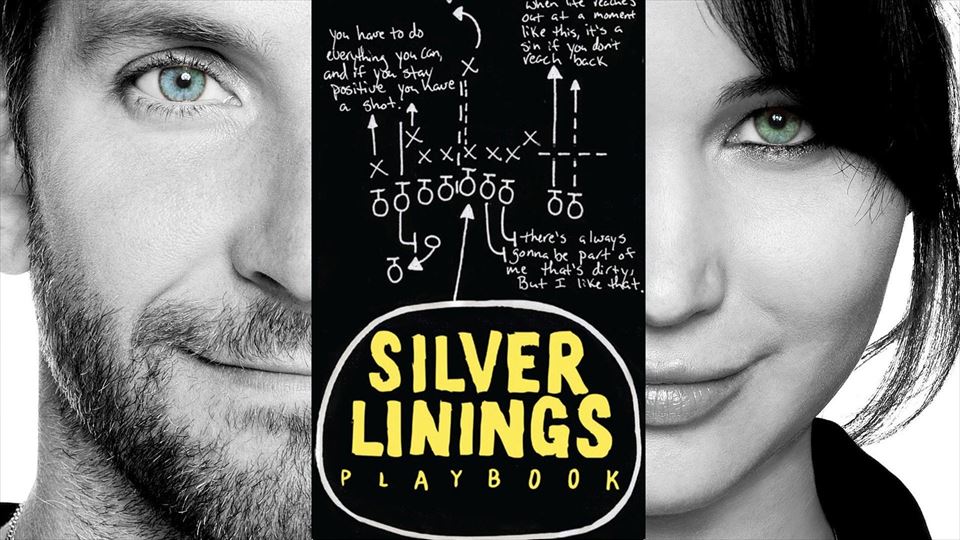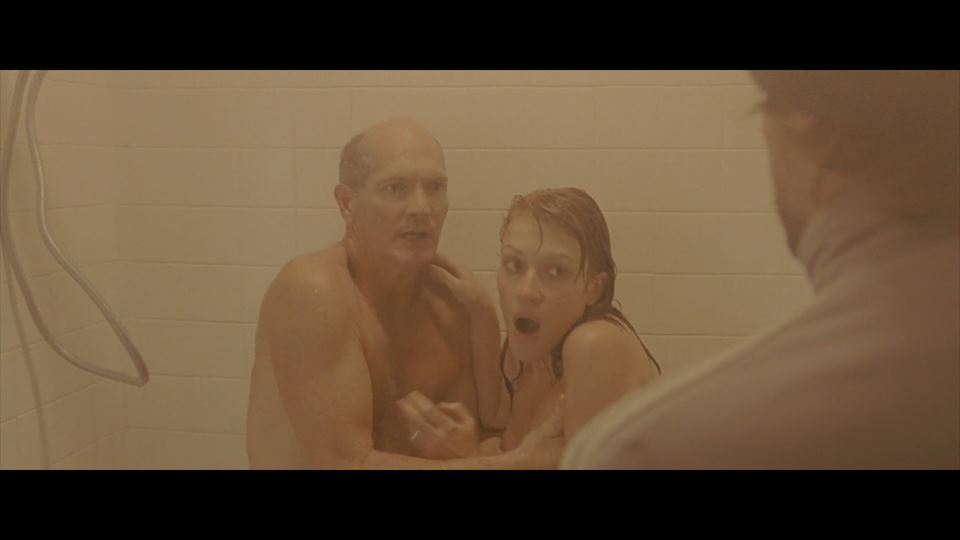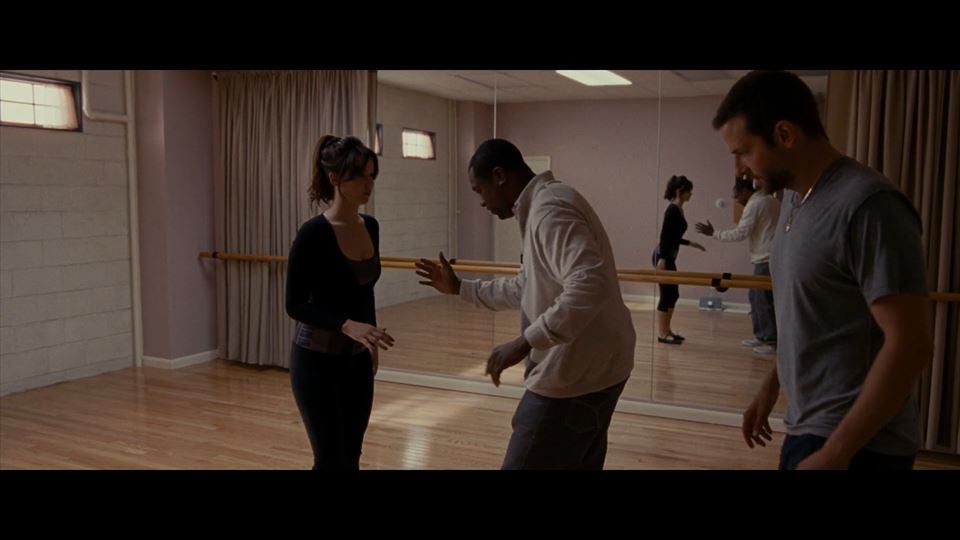
Spoilers and Impressions
Pat Solitano, who has bipolar turmoil, is discharged from a psychological wellness office into the consideration of his folks following eight months of treatment. He discovers that his significant other, Nikki, has moved away and his dad, Pat Sr., is unemployed and falling back on bookmaking to acquire cash to begin an eatery. Pat is resolved to get his life in the groove again and accommodate with Nikki, who got a limiting request against him after the brutal scene that sent him away.

Pat utilizes the Latin expression “Excelsior,” interpreted as “consistently higher” or “ever upward,” as the mantra of his new idealistic outlook. Meanwhile, Pat encounters a progression of tension assaults in his new life, including a brutal response to Ernest Hemingway’s A Farewell to Arms, which he tosses into the yard, crushing his window all the while.

While conversing with his court-ordered advisor Dr. PatelPat clarifies again why he was hospitalized.

Getting back home ahead of schedule from his secondary school showing work, he discovered Nikki in their shower, engaging in sexual relations with another educator, as Pat and Nikki’s wedding tune, Stevie Wonder’s “My Cherie Amour,” played on their sound system. Infuriated, he about beat the man to death. In spite of this, Pat doesn’t accept he needs prescription to deal with his condition.

At supper with his companion Ronnie and Ronnie’s significant other, Veronica, Pat meets Veronica’s sister, Tiffany Maxwell, a youthful widow with an anonymous issue. They interface over supper discussing various medications they have taken to deal with their psychological instabilities.

Sparkles fly among Pat and Tiffany and she attempts to associate by offering easygoing sex, yet Pat continues concentrating on getting Nikki back. Tiffany attempts to draw nearer to Pat and even proposals to convey a letter to Nikki—if, consequently, he will band together with her in an up and coming move rivalry. He hesitantly concurs and the two start a thorough practice routine over the next weeks.

Indeed, even Danny comes to help, yet when he does, Pat begins to get desirous and shows Tiffany a touch of love; in any case, he attempts to drive his emotions away. Pat accepts the opposition will be a decent method to show Nikki that he has changed and improve as an individual.

The senior Patrizio plans to open his own café and has turned to illicit bookmaking. Having wagered practically the entirety of his cash on the result of a Philadelphia Eagles game, he requests that Pat go to as a “four leaf clover”. Pat approaches Tiffany for downtime from training to go to the game. She gives him a composed answer from Nikki, in which she warily indicates there might be an opportunity for compromise between them. Before he gets into the arena, Pat and his sibling Jake engage in a battle when some supremacist fans bug a gathering of Indian fans that happen to incorporate his specialist, Dr. Patel, and is pulled away by the police.

The Eagles lose the game and Patrizio is enraged. Tiffany appears at their home and calls attention to that the manner in which she is “perusing the signs”, Philadelphia groups improve when she and Pat are together.

Persuaded, Patrizio makes a parlay with his betting companion Randy: if the Eagles dominate their next match and Tiffany and Pat score 5 out of 10 in their move rivalry, he will win back twofold the cash he lost on the principal wager. Pat is hesitant, and Tiffany, Dolores, and Patrizio plot to convince Pat to move in the opposition by disclosing to him that Nikki will be there; it is uncovered that his folks have covertly bolstered Tiffany’s endeavors to coexist with him. Pat notification that the letter from Nikki likewise alludes to “perusing the signs” and understands that Tiffany composed it.
Pat, Tiffany and every other person show up at the opposition the evening of the football match-up. Tiffany is sickened to find that Nikki is in the crowd. Upset that Pat may win Nikki back and that she will lose him, Tiffany goes to the bar and has two vodkas.

A rushed Pat spots her and figures out how to persuade her onto the move floor and they play out their daily practice. As they move, the Eagles dominate their match and at the finish of their set they score precisely 5 focuses.
In the midst of cheers from his family and befuddled looks from the group, Pat methodologies Nikki and talks discreetly into her ear. Tiffany stomps off. Pat abandons Nikki after a short discussion, and pursues Tiffany. He gives her a letter, where he concedes that he realizes she produced Nikki’s letter and admits that he adored her from the second he met her, however it took him such a long time to grapple with it. They share a kiss. Patrizio opens a café with the cash he has won, Danny becomes significantly nearer to the Solitanos, and Pat and Tiffany start a relationship, done wearing their wedding bands.

I think its amazing how Jennifer Lawrence and Bradley Cooper portray the roles of those who have mental health issues. This is also another way to promote mental health awareness. I love the fact that they are view themselves positively, most especially how Pat always looks at the silver lining in everything.
I also love the way that each character shows some signs of mental health disorder like bipolar, OCD, anxiety and ADHD. Let me break it down so that we can understand it better.
Pat Solatano Jr. Our primary character is determined to have bipolar confusion, otherwise called manic-depressive illness, is a brain disorder that causes abnormal movements in disposition, vitality, action levels, and the capacity to do everyday assignments. Side effects of bipolar issue are serious. They are unique in relation to the ordinary good and bad times that everybody experiences occasionally. Bipolar turmoil side effects can bring about harmed connections, helpless occupation or school execution, and even self-destruction. Be that as it may, bipolar disorder can be dealt with, and individuals with this sickness can lead full and productive lives.
Some symptoms show that Pat really is a bipolar:
- Delusion – He confesses to Dr. Patel that he did have a delusion. This makes the individual lose touch with the reality. Also, tehy may fail to realise which is real and imaginary.
- Elevated mood – A manic episode taht the individual may fee highly energetic and hyperactive accompanied by ab normal behavior.
- Irritability – In the scene where Pat throws the book by the window and expresses his irritability by venting it out to his parents. Irritability is when a person often feel irritated with the activities do irrespective of the circumstances.
Also, some behavioral changes include:
- Talking very fast, jumping from one idea to another, having racing thoughts
- Being easily distracted
- Increasing activities, such as taking on new projects
- Being overly restless
- Sleeping little or not being tired
- Having an unrealistic belief in one’s abilities
- Behaving impulsively and engaging in pleasurable, high-risk behaviors
Tiffany Maxwell. She is a puzzling lady who turns into a sex-addict who is addicted in the wake of feeling discouraged when her significant other, Tommy died. She gets terminated for engaging in sexual relations with everyone in the workplace and she is compelled to take prescriptions. She says that she isn’t a “slut” any longer. Dancing is her passion and she despises football.
Although undiagnosed within the film, here’s Tiffany’s symptoms for BPD (borderline personality disorder):
- states that she’s “empty inside”
- reckless sexual encounters/promiscuity
- substance abuse, alcohol
- unstable mood
- uncertain sense of identity
To be diagnosed with BPD, a person must experience at least five of the following symptoms:
- Fear of abandonment
- Unstable or changing relationships
- Unstable self-image; struggles with identity or sense of self
- Impulsive or self-damaging behaviors (e.g., excessive spending, unsafe sex, substance abuse, reckless driving, binge eating).
- Suicidal behavior or self-injury
- Varied or random mood swings
- Constant feelings of worthlessness or sadness
- Problems with anger, including frequent loss of temper or physical fights
- Stress-related paranoia or loss of contact with reality
Pat Solatano Sr. Pat’s dad shows what we used to call an obsessive neurosis fanatical mental issues; these days we may exaggerate and call it OCD. It’s a decent depiction of the basic confusion run of the mill of sports devotees. On the off chance that you consider sports constantly, it is difficult to concentrate on what’s wrong with the rest of your life.
These wild considerations or practices can meddle with an individual’s work, school, and connections. In spite of the fact that the practices may give the individual flitting help from his general tension, he doesn’t get delight from the obsessiveness. Individuals experiencing over the top urgent tendencies may likewise fight with engine contractions or redundant developments, for example, grimacing and jerking. Investigation into OCD is progressing. For example, defects called micro-structural abnormalities have been found in the brain’s white matter of those who suffer OCD, and frontline treatment for this disorder includes exposure and response prevention, as well as plain old empathy and compassion in delivering therapy. Current scientific thinking holds that OCD results from a confluence of factors—a biological predisposition, environmental factors including experiences and attitudes acquired in childhood, and faulty thought patterns.
The fact that many OCD patients respond to SSRI antidepressants suggests the involvement of dysfunction in the serotonin neurotransmitter system. Ongoing research suggests there may be a defect in other chemical messenger systems in the brain.
OCD may coexist with depression, eating disorders, or attention-deficit/hyperactivity disorder, and it may be related to disorders such as Tourette’s syndrome, and hypochondria, though the nature of the overlap is the subject of scientific debate.
Danny McDaniels. He is Pat’s best friend in the hospital, was also psychiatrically hospitalized for criminal acts (assault while high on methamphetamine). He is diagnosed with “ADHD” and “anxiety disorder”.
Attention-deficit/hyperactivity disorder (previously known as attention deficit disorder or ADD) is a neurobehavioral disorder characterized by core symptoms of inattentiveness, distractibility, hyperactivity, and impulsivity. ADHD is thought to be the most common childhood mental health disorder, with estimates of its prevalence in children ranging from 5 to 11 percent. ADHD in adulthood is thought to be less common, with approximately 2 to 5 percent of adults diagnosed.
ADHD side effects can meddle with work, school, family undertakings, and connections, and dealing with the confusion can be a test for the two youngsters and grown-ups. Luckily, there are medicines that have been demonstrated to be viable, and anybody influenced by ADHD can master adapting abilities to work around struggles and harness their talents—as many successful individuals with ADHD have already done.
A few kids and grown-ups with ADHD think that it’s hard to focus on undertakings at school or work and may wander off in fantasy land often. Kids with ADHD may get troublesome, insubordinate, or experience difficulty coexisting with guardians, friends, or educators. Kids who battle with hyperactivity and impulsivity, specifically, regularly have conduct difficulties that can be hard for grown-ups to oversee.
Grown-ups, then again, might be bound to report feeling restless or fidgety; if they struggle with impulsivity, they may make rash decisions that adversely affect their life. For both children and adults, official working (planning, emotional regulation, and decision-making) is frequently influenced also. Numerous kids and grown-ups show either hyperactive or absentminded side effects of ADHD, but on the other hand it’s feasible for both arrangements of manifestations to exist together, in what is normally called combined type ADHD.
Anxiety on the other hand encompasses feelings of worry, nervousness, or dread. Although unpleasant, occasional bouts of anxiety are natural and sometimes even productive: By signaling that something isn’t quite right, anxiety can help people both avoid danger and make important and meaningful changes.
But persistent, pervasive anxiety that disrupts one’s daily life, whether at school, work, or with friends, can be the mark of an anxiety disorder. Nearly one-third of adults in the U.S. will grapple with one at some point in their lives, according to the National Institutes of Health, and the condition strikes more women than men.
Be that as it may, relentless, unavoidable tension that disturbs one’s day by day life, regardless of whether at school, work, or with companions, can be the characteristic of an uneasiness issue. Nearly one-third of adults in the U.S. will grapple with one at some point in their lives, as per the National Institutes of Health, and the condition strikes a greater number of ladies than men.
Anxiety disorders show in various manners, and are regularly symptomatically particular. Summed up nervousness issue is an interminable condition of serious concern and pressure, frequently without incitement. Panic disorder refers to sudden and repeated panic attacks—episodes of intense fear and discomfort that peak within a few minutes. Obsessive-compulsive disorder is marked by intrusive thoughts or compulsions to carry out specific behaviors, such as handwashing. Post-traumatic stress disorder may develop after experiencing or witnessing a traumatic event.
Anxiety is regularly joined by sorrow, and the two offer a basic genetic architecture.
Past hereditary qualities, childhood experiences such as early trauma or parental overprotection can play a role in forming an anxious disposition. In individuals with anxiety disorder, the brain circuitry that controls the threat response seems to go awry: The amygdala, a structure that detects danger, can become overactive, triggering a threat where none really exists.
I like the manner in which the film advances metal wellbeing mindfulness and let us see the life of those individuals who endures it. It is difficult to fight with our inner demons’ presences and I simply trust that a few people would be thoughtful to them since it is a day by day battle for them to manage it consistently.

Resources:
https://en.wikipedia.org/wiki/Silver_Linings_Playbook
https://www.youtube.com/watch?v=FhKIpb3EjYc
https://www.psychologytoday.com/us/basics/ocd